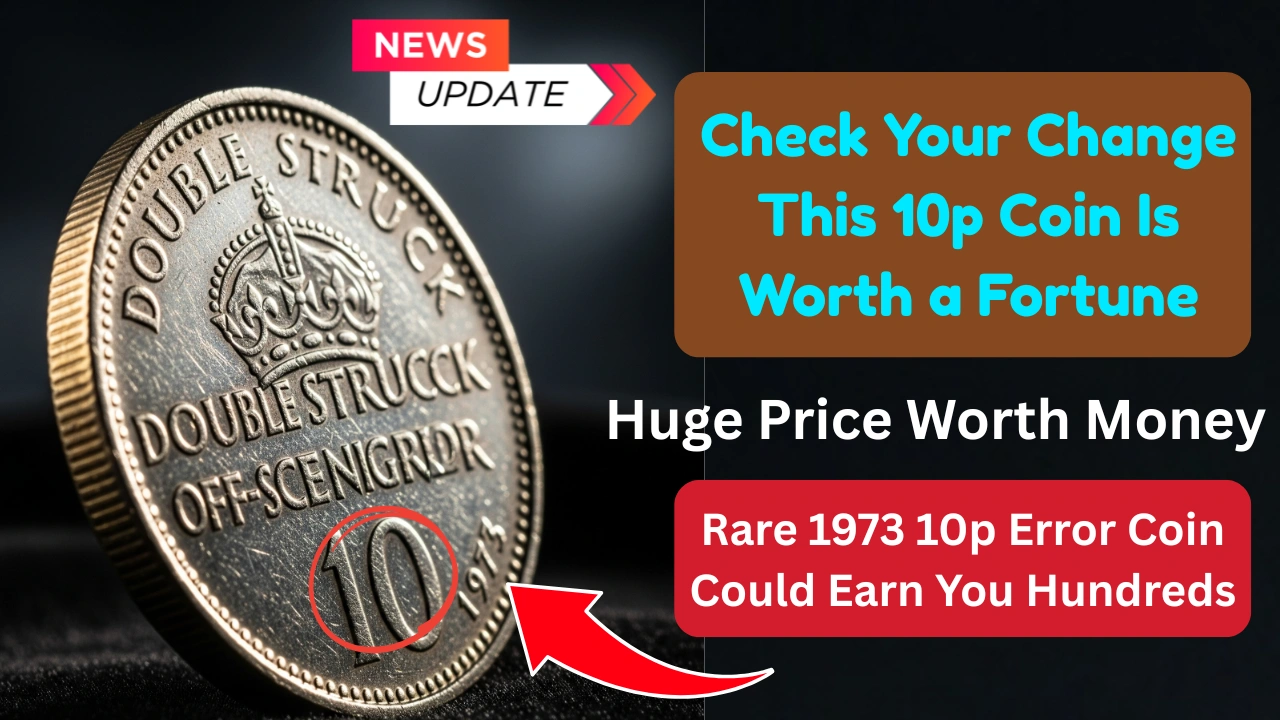The 1973 10p Coin might look like just another piece of small change rattling around in your pocket, but some versions of this humble coin are turning out to be worth hundreds of pounds. In recent years, collectors across the UK – from London to Manchester, Birmingham, Glasgow, and beyond -have been on the hunt for this rare numismatic treasure. So, if you’ve got a jar of coins at home, it’s worth taking a closer look -you could be holding a little piece of history that’s far more valuable than 10 pence.
Why the 1973 10p Coin is Special
1973 marked the 25th anniversary of Queen Elizabeth II’s coronation, and Britain was still in the early years of decimalisation, having switched from the old currency system in 1971. While millions of 10p coins were minted that year, a small number are believed to have been struck with minting errors – tiny mistakes in the coin’s design or lettering that make them highly sought after by collectors.
These errors can range from slight misalignments in the design to missing details or unusual inscriptions. In the world of coin collecting, the rarer and more unique the error, the more valuable the coin becomes. Some rare examples have fetched £200–£300 at auction, particularly those in pristine condition or “uncirculated” state.
DWP Surprise Payment for Pensioners – How to See If You’re Owed Extra
Spotting a Rare 1973 10p Error Coin
Not every 1973 10p is worth a fortune, so you’ll need to know what to look for. Common signs that your coin might be valuable include:
-
Off-centre strikes – where the design isn’t perfectly aligned.
-
Misprints in lettering – letters that are doubled, missing, or oddly shaped.
-
Unusual metal tones – coins struck on the wrong type of metal blank.
-
Clipped planchets – a section of the coin’s edge is missing due to a minting mishap.
Where to Sell or Value Your Coin
If you suspect you’ve found a rare 1973 10p, you have several options:
-
Auction Houses – such as Spink or London Coin Auctions, which specialise in numismatics.
-
Online Marketplaces – like eBay, though prices vary, so research sold listings before selling.
-
Coin Fairs & Collector Events – held in cities like Leeds, Cardiff, and Edinburgh, where you can get in-person valuations.
-
Local Coin Dealers – some shops in high streets across the UK offer free appraisals.
Remember, condition matters – a coin kept in a protective sleeve or that’s been barely handled will generally fetch a much higher price than one that’s scratched or worn.
Tips for Coin Collecting in the UK
Whether or not you find a rare 1973 10p, coin collecting can be a rewarding hobby. Here are some tips:
-
Check your change regularly – rare coins often go unnoticed.
-
Store coins properly in acid-free holders to prevent tarnishing.
-
Stay informed through UK numismatic groups and The Royal Mint’s updates.
-
Look out for commemorative coins released in limited numbers each year.
Even a modest coin collection can grow in value over time, especially if you focus on condition and rarity.
For the best evaluation, it’s worth comparing your coin to official images from The Royal Mint (https://www.royalmint.com) or taking it to a reputable coin dealer.
Q1: How many 1973 10p error coins exist?
Exact numbers are unknown, but experts agree they are extremely rare, making them more valuable.
Q2: Can I find a 1973 10p in circulation today?
It’s possible, but unlikely. Many have been withdrawn or are already in collections.
Q3: How much is the most valuable 1973 10p sold for?
Some error coins have sold for over £300 at auction.
Q4: Should I clean my 1973 10p before selling?
No. Cleaning can reduce its value significantly – keep it in its original condition.
Q5: Where can I check if my coin is genuine?
You can compare it with examples on The Royal Mint’s official site or get a professional appraisal.
